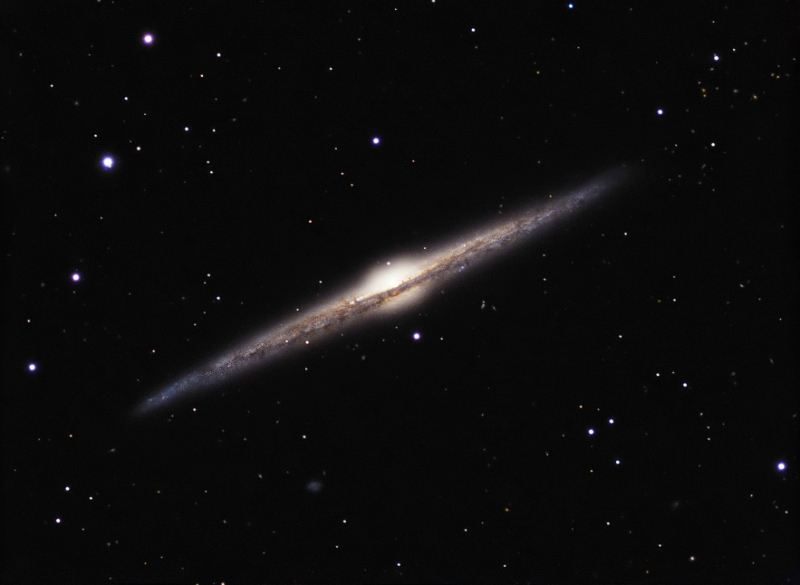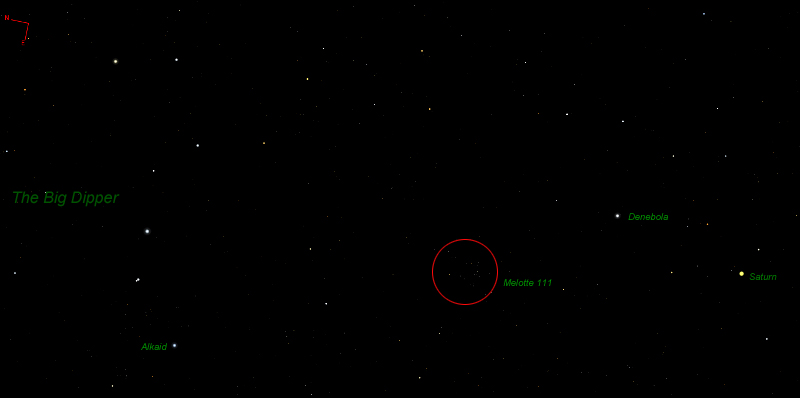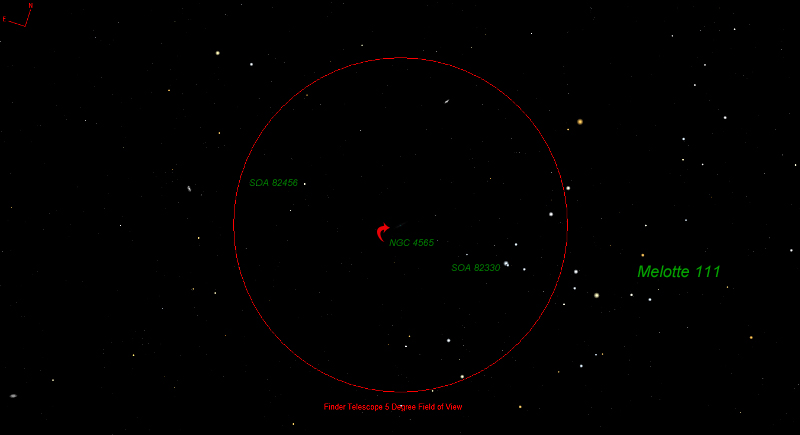Finding NGC 4565: On dark nights small telescopes can show NGC 4565 as a faint streak of light, though the fine details and colors visible in long-exposure images like the one above are not visible. Still, visually observing such a galaxy has its own rewards, in that photons 30,000,000 years old are hitting the retina of your eye. Just seeing the galaxy, however faintly, is like spotting the lights of a great ship far out at sea. Add to this the sounds and scents of a spring evening, and you have an experience that you cannot get from an image alone. To find the great galaxy, I usually start by mentally drawing a line between Denebola, which marks the tip of the lion's tail in Leo, to Alkaid, which marks the tip of the tail of the Great Bear (or the end of the handle of the "Big Dipper"). About a third of the way from Denebola to Alkaid, you find the open star cluster Melotte 111 in Coma Berenices. This lyre-shaped group of stars is a true open cluster. See the charts below. There is a double star on the eastern side of the cluster, SOA 82330, that is visible in binoculars or a finder telescope (refer to the bottom chart). Once you find this star, look eastward for the star SAO 82456, which is a 7th magnitude star about 3 degrees east of the double star indicated below. NGC 4565 is almost exactly half way between these two stars. If you have a very dark sky, you may be able to see not only the nucleus of the galaxy, but also be able to see it as a thin needle of light. Be sure and use averted vision, looking to one side of the galaxy to try to discern the orientation. At the semi-rural skies of our farm, I could just make out the nucleus and orientation of the galaxy with my Televue 85 (85mm lens) refractor. A 6" aperture telescopes will make the galaxy easier to see and larger scopes begin to reveal the thin dark dust lane so evident in long exposure images. As with all deep sky objects, a dark moonless night free of light-pollution will give the best view, and be sure to wait until the galaxy is high overhead for the best view. If you click on either chart you will be taken to printable chart, with black stars on a white background.
|
||||||||||||||||||||||


